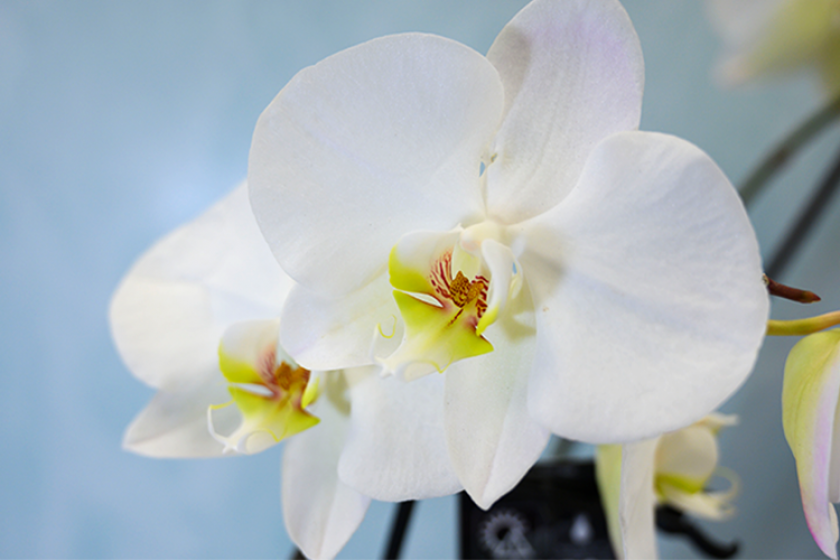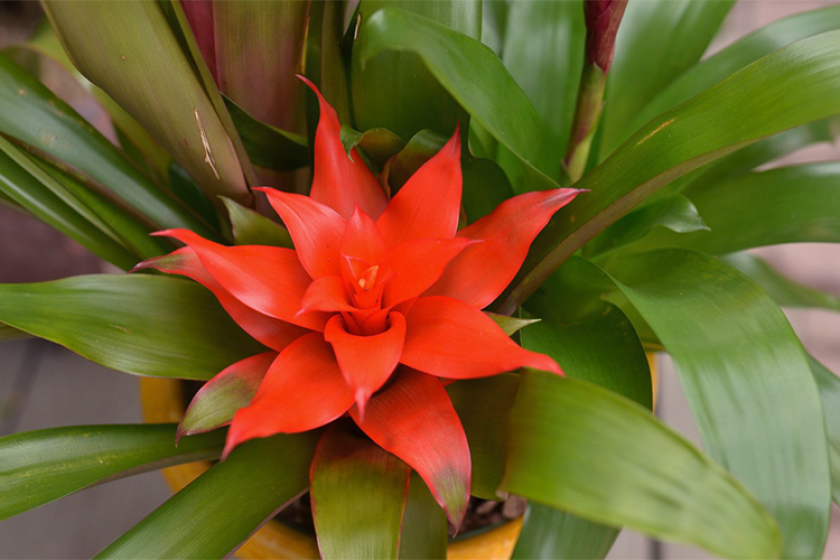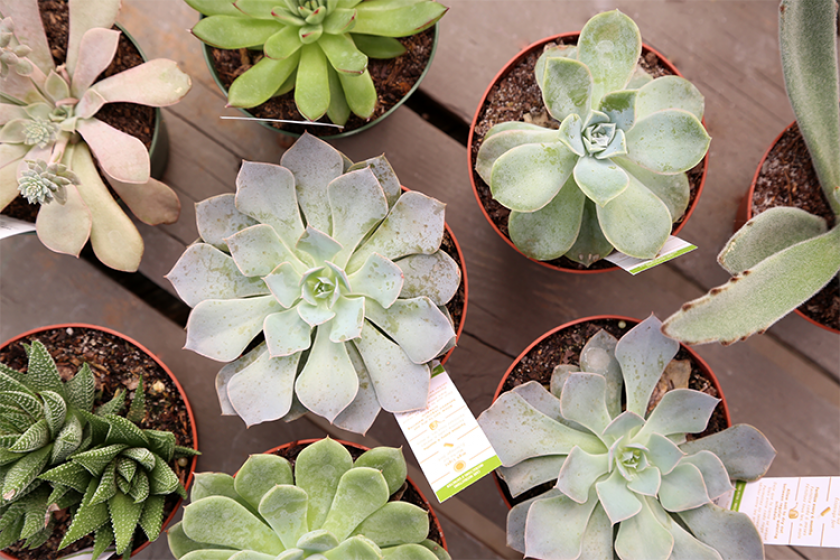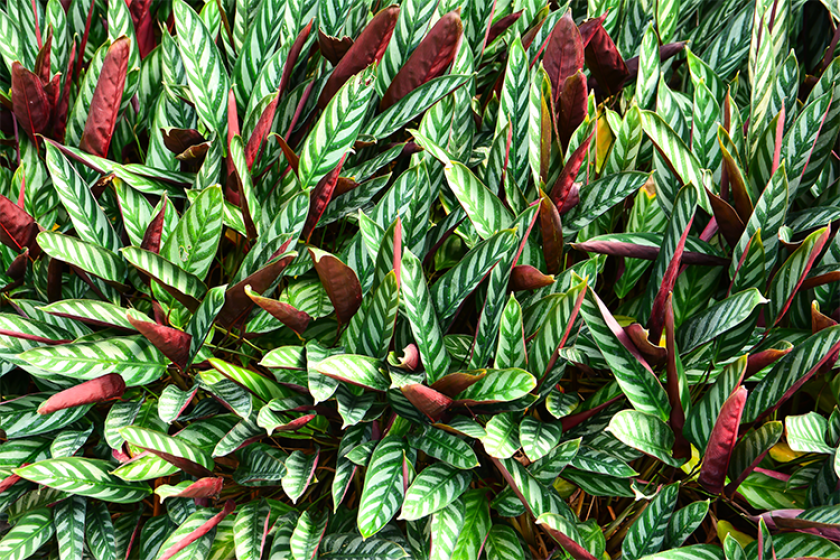Houseplants have made a big comeback these days, taking over homes, offices, and social media. Cared for correctly, indoor plants can last for many years. But before you bring one home, you’ll need to know the care requirements, so you can give it exactly what it needs. We’ve highlighted a few of our most popular houseplants and tips on how to best care for them.
PHALAENOPSIS ORCHIDS
Phalaenopsis orchid (most common) - also known as moth orchids, are thick-leaved plants with exotic-looking, arching sprays of blooms. Color range includes whites, pinks, lavenders and yellows in both solid colors and mixes of stripes and spots, with blooms lasting as long as three months. These spectacular plants may appear to be fragile and delicate, but they're actually quite durable.
Light - Phalaenopsis are low-light orchids and prefer morning light. Place in an east-facing window or in a shaded southerly or westerly exposed window.
TIP: The color of your orchid leaves can help you determine if the lighting is sufficient. Dark green leaves may indicate there's not enough light and light green leaves may mean too much light.
Watering - Orchids like water (room temperature) trickled down their roots- just like in the rainforest. Orchids grown inside need to be watered about every 7-14 days.
TIP: Orchid roots that need watering will turn white in color. A well saturated root takes on greenish tone.
Pruning - Moth orchids will rebloom on an existing stalk as long as it hasn’t started to brown out (indicative of not enough water). Cut below the lowest bloom that has already fallen off and above the node below it that hasn’t sprouted yet. Other orchids will send up a new spike. Once done, remove the original spike close to the base.
Repotting
- Just like other plants, an orchid is ready to be repotted into a larger container once its roots are flowing over the sides of the pot.
- When repotting, simply remove the orchid from the container, prune out any dead roots (these will be brown and thin, not plump and green) and replace along with your new potting medium.
- Phalaenopsis orchid can be planted in either moss or bark.
BROMELIADS
Bromeliads are available in an array of colors and textures. Foliage can be red, green, purple, orange, yellow, stripes, or spotted. Some of our favorite varieties include guzmaniaave (tall spike in the center) and neoregelia (shorter but have more color on their leaves). Bromeliads bloom for approximately three months.
Lighting - Bromeliads prefer low to medium light but not direct sunlight. A south, west, or east-facing window is ideal. Too much light can cause leaves to burn.
Watering - Follow a wet/dry watering cycle, keeping the soil evenly moist. Misters are great for bromeliads and provide much needed humidity.
Pruning - Remove any yellow leaves to keep your plant strong and growing. Bromeliads have a mother plant with a bloom stalk, which forms pups (babies). Once the pups have roots, you can detach and repot them into new containers, or you can leave the pups on the mother plant, allowing them to get full and bushy.
Repotting - Repotted pups will take approximately 6-9 months to start blooming on their own.
SUCCULENTS
Succulents are one of the most versatile plants on the globe. Because they have shallow roots, they can survive without a great deal of water or care and thrive in drought-like conditions. Succulents come in a variety of pleasing shapes and colors, looking good whether they have blooms or not. Succulents can be used in all sorts of ways; as table arrangements, living sculptures, and as cut flowers. The sky’s the limit when it comes to using succulents.
Lighting - Succulents love bright light in a west or south-facing window. Gray varieties are the exception and tend to not need as much sun.
Watering - Follow a wet/dry cycle (let them completely dry out). Succulents hold water in their leaves and should only be watered once the soil in the container has begun to wick away (pull away) from the sides of the pot. When this happens, it means that the plant has pulled every bit of moisture out of the potting medium and is now ready to be resaturated. Water well and repeat the cycle.
TIP: Different rules apply when watering aloe vera. Only water your aloe once the tips of the leaves are beginning to thin out and become slightly yellow. Any earlier, you run risk of root rot.
Pruning - If your cactus/succulent has become unruly, you can prune it in early spring.
TIP: Take the cuttings from your succulents, plant them in a pot, and wait to see what will grow.
PHILODENDRONS
Philodendrons are one of the easiest houseplants you can possibly grow (great for beginners). Whether you choose upright or trailing/climbing types, they are perfectly happy in a home setting. Philodendrons are very low maintenance and can sit idle for long periods. You can train them up a trellis or leave them to grow naturally. The most common variety is the Philodendron Cordatum that produces small, heart-shaped leaves.
Lighting - Philodendrons prefer medium to bright light.
Watering - All varieties prefer to go slightly dry in between waterings. However, it is important not to go too long, since newly emerging leaves need water to develop properly.
TIP: A lot of people want to know if they can propagate philodendron with just a leaf. The answer is no. While a cut leaf will last about one month in water, you’ll need two nodes and an eye on a vine for a successful cutting.
Pruning - As vining types of philodendrons continue to grow, they can become long and leggy. These plants don’t mind being cut back, so feel free to cut off trailing growth; it will encourage new shoots to form at the point where they were cut. Remove any yellow leaves to keep your plant healthy and strong.
CALATHEA
Calathea is an easy-care, tropical plant also known as the zebra plant or zebrina plant (calathea zebrina). These trendy houseplants are loved for their large, oval, distinctly patterned, and vibrantly colored leaves. Leaves can be curved, ribbed, round, oval or pointed and exhibit various unique patterns. Leaf colors range from yellow, rose, white, and even olive.
Lighting - Calatheas prefer medium light.
Watering & Humidity - Keep the soil moist but never soggy. Calathea plants don’t like to be heavily watered. If your leaves are beginning to curl, it’s too wet. A humidity tray is the best way to grow calathea. Brown leaf edges may be a sign that the air is too dry. Humidity can be increased by placing your plant on a tray of wet pebbles (be sure the pot is on the pebbles and not in the water).
TIP: We don’t recommend misting your calatheas. Misting can cause damage to the hairy leaves and allow powdery mildew to occur.
Pruning - Prune your calathea plant regularly to keep it looking beautiful. Remove any yellow leaves to keep your plant healthy and strong.
To learn more about easy-care houseplants click here.
To learn more about the best indoor-blooming plants to enjoy in winter click here.





